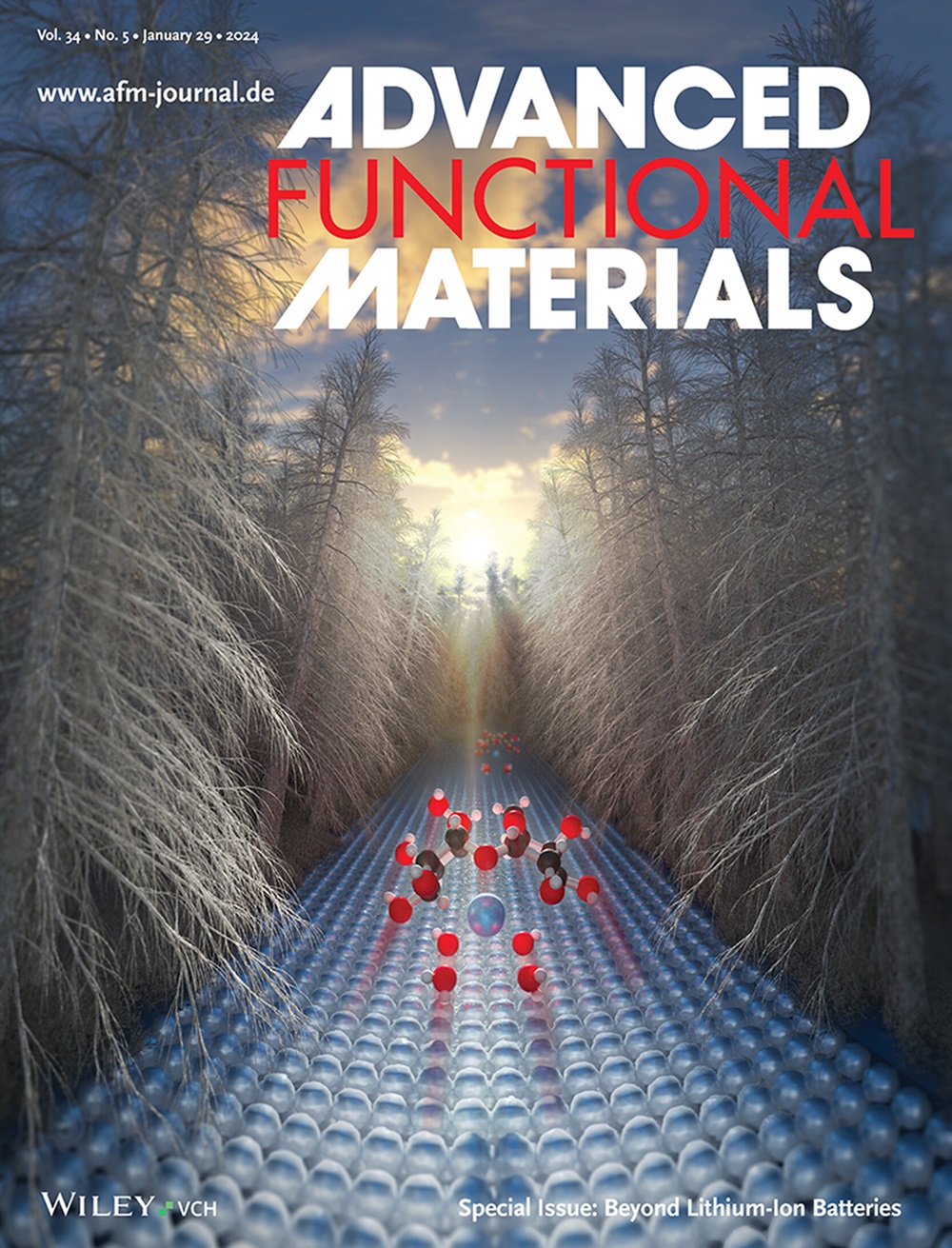Electronic Redistribution in Heterogeneous Composite Toward Advanced Rechargeable Zinc–Air Batteries with Exceptional Power Density and Ultralong Cyclability
IF 18.5
1区 材料科学
Q1 CHEMISTRY, MULTIDISCIPLINARY
引用次数: 0
Abstract
Developing efficient and stable bifunctional oxygen catalysts is essential for addressing the trade-off between reduction and oxidation reactions in rechargeable zinc–air batteries (ZABs). In this work, a novel composite regulation-enhanced strategy is proposed to prepare a heterogeneous composite catalyst, FeCoNiCuMn@NC/NiFeCe LDH, exhibiting exceptional bifunctional activity. The catalyst achieves a half-wave potential of 0.905 V for the oxygen reduction reaction and a 266 mV overpotential at 10 mA cm−2 for oxygen evolution reactions. Experimental and theoretical analyses reveal that the heterogeneous interface between FeCoNiCuMn@NC and NiFeCe LDH effectively optimizes the electronic structure of materials by shifting the d-band center closer to the Fermi level. This optimization not only enhances the continuous distribution of electronic density but also improves the adsorption and desorption processes of intermediates, thereby effectively overcoming the trade-off between catalyst activity and stability. When applied in rechargeable ZABs, the catalyst demonstrates remarkable cycling stability over 750 h and a peak power density of 268.5 mW·cm−2. This study lead to a breakthrough in bifunctional oxygen catalyst design, significantly advancing rechargeable ZABs and inspiring new strategies for diverse energy storage and conversion systems.

开发高效稳定的双功能氧催化剂对于解决可充电锌空气电池(ZAB)中还原反应和氧化反应之间的权衡问题至关重要。本研究提出了一种新颖的复合调节增强策略来制备一种异质复合催化剂--FeCoNiCuMn@NC/NiFeCe LDH,该催化剂具有优异的双功能活性。该催化剂在氧还原反应中的半波电位为 0.905 V,在 10 mA cm-2 氧进化反应中的过电位为 266 mV。实验和理论分析表明,FeCoNiCuMn@NC 与 NiFeCe LDH 之间的异质界面通过使 d 带中心更接近费米级,有效地优化了材料的电子结构。这种优化不仅增强了电子密度的连续分布,还改善了中间产物的吸附和解吸过程,从而有效地克服了催化剂活性和稳定性之间的权衡问题。当应用于可充电 ZAB 时,该催化剂在 750 小时内表现出卓越的循环稳定性,峰值功率密度达到 268.5 mW-cm-2。这项研究在双功能氧催化剂设计方面取得了突破性进展,极大地推动了可充电 ZAB 的发展,并为多种能源存储和转换系统提供了新策略。
本文章由计算机程序翻译,如有差异,请以英文原文为准。
求助全文
约1分钟内获得全文
求助全文
来源期刊

Advanced Functional Materials
工程技术-材料科学:综合
CiteScore
29.50
自引率
4.20%
发文量
2086
审稿时长
2.1 months
期刊介绍:
Firmly established as a top-tier materials science journal, Advanced Functional Materials reports breakthrough research in all aspects of materials science, including nanotechnology, chemistry, physics, and biology every week.
Advanced Functional Materials is known for its rapid and fair peer review, quality content, and high impact, making it the first choice of the international materials science community.
 求助内容:
求助内容: 应助结果提醒方式:
应助结果提醒方式:


